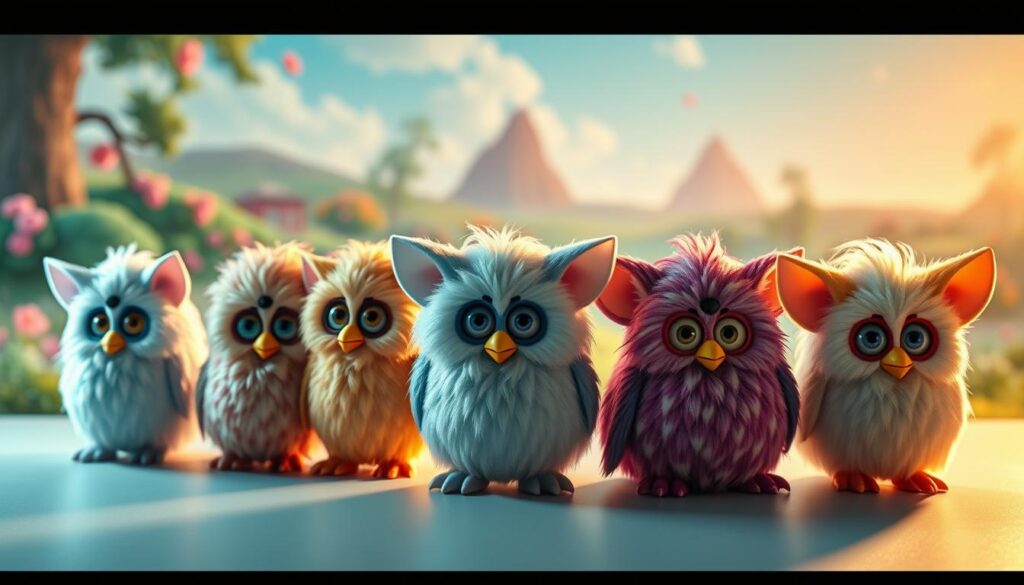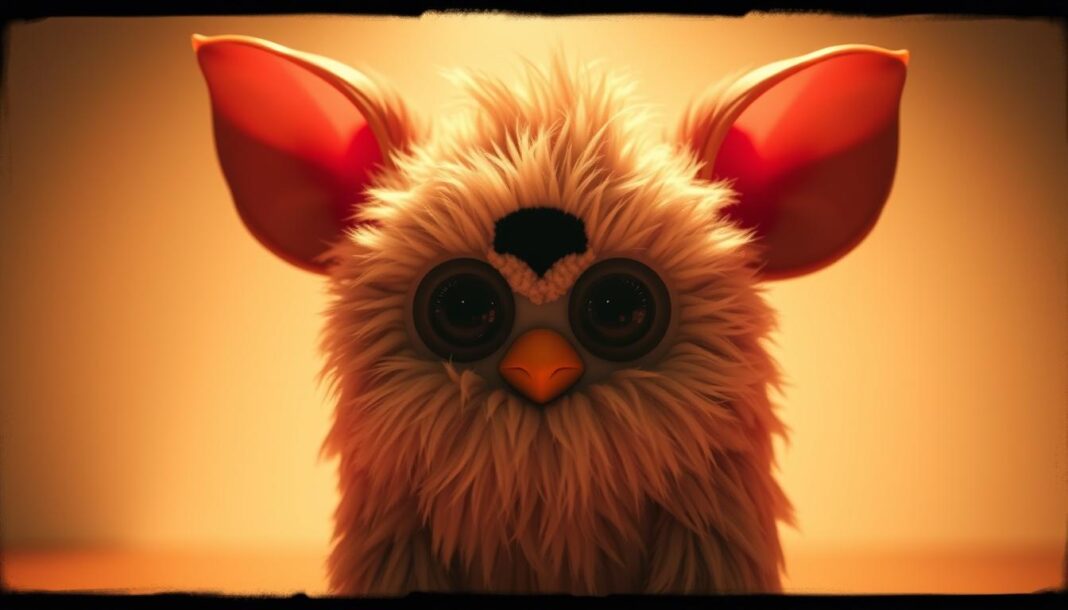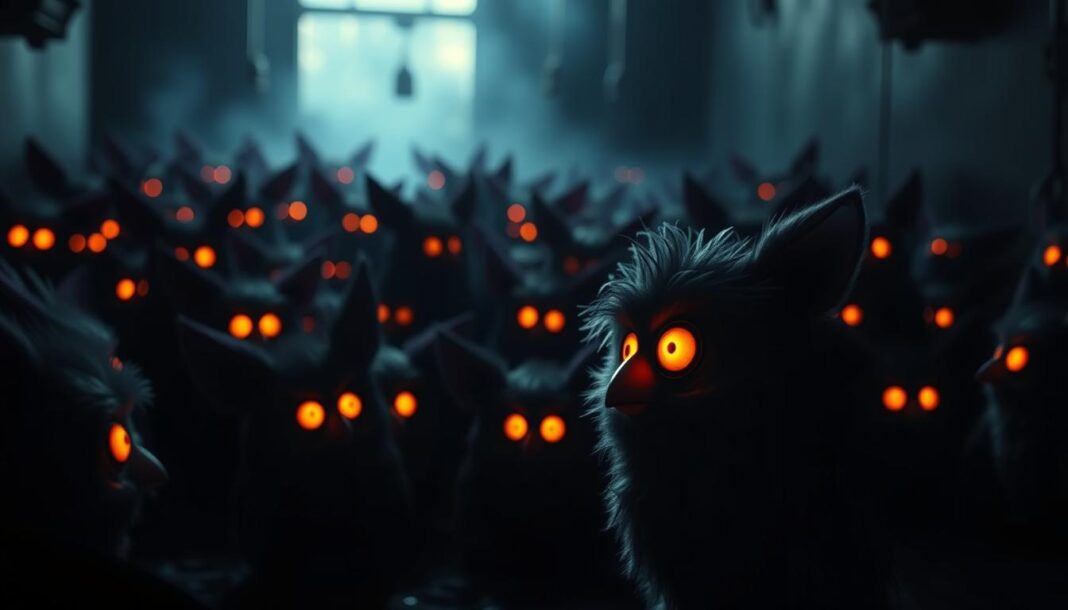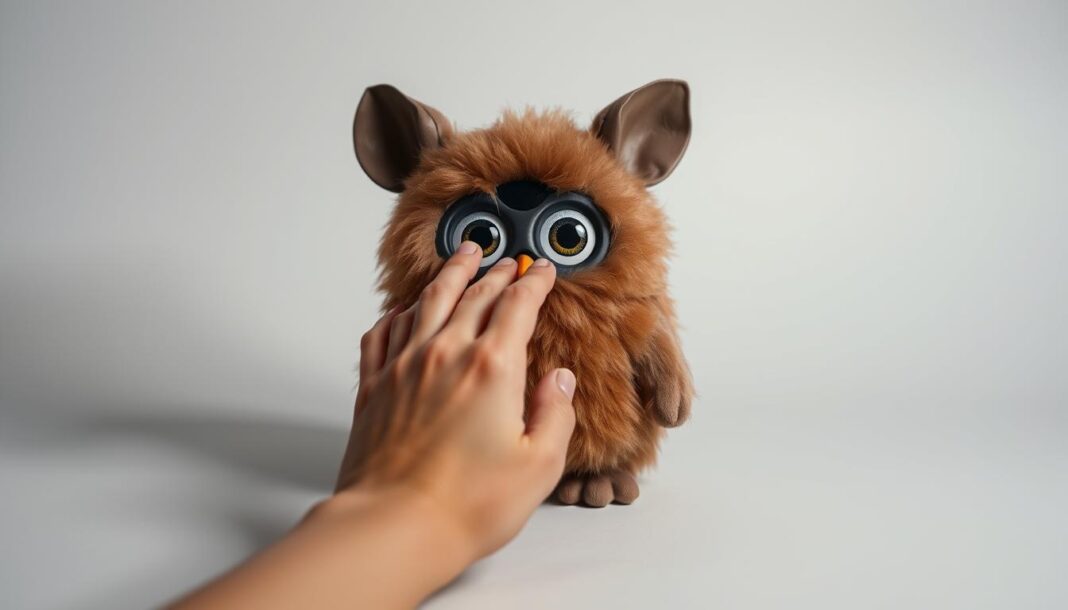The original Furby is an iconic toy that captured the hearts of many in the 90s. As we explore the fascinating history of these interactive electronic pets, we’ll delve into their release and evolution over the years.
Released in 1998, the first generation of Furbies was an instant hit, becoming a cultural phenomenon among children and adults alike. These furry robotic companions seemed to develop their own personalities, speaking their own language and captivating imaginations worldwide.
As we journey through the history of Furbies, we’ll examine how they remained relevant, maintaining their place in toy history as one of the first successful domestic robots. Discover the story behind these beloved toys and their impact on the toy industry.
The Birth of an Electronic Companion
In the mid-1990s, the concept of an interactive furry creature began to take shape, thanks to the efforts ofDave HamptonandCaleb Chung. Their collaboration marked the beginning of a new era in toy innovation.
The Creators Behind the Furry Robot
Dave Hampton and Caleb Chung spent approximately two years developing and perfecting Furby. Their journey began with a shared vision of creating a toy that could interact with children, providing companionship and entertainment. Hampton’s idea to create an anthropomorphic ball of fur resonated with Chung, and together they started working on the concept. The name “Furby” was suggested by Hampton’s son, who noted that the creature resembled a ball of fur.
The duo’s efforts were not without challenges. After two attempts at licensing their concept, they invited Richard C. Levy, a fellow toy and game inventor, to join their efforts. Levy’s involvement was instrumental in bringing Furby to the attention of Tiger Electronics, a leading toy manufacturer at the time.
From Concept to Prototype
The development process was lengthy and demanding. Hampton and Chung spent nine months creating the initial concept and another nine months refining it into a working prototype. The journey was not straightforward; they faced numerous challenges in bringing their vision to life. The Furby was designed to be more than just a toy; it was conceived as a robot that could interact with its environment and users. This interactive feature was a significant innovation, setting Furby apart from other toys on the market.
Once the prototype was ready, Levy presented it to Tiger Electronics, where Roger Shiffman recognized the potential of this interactive creature and bought the rights to it. Furby’s first public appearance was at the American International Toy Fair in 1998, marking the beginning of its journey to becoming a beloved toy. The production decisions made by Tiger Electronics were crucial in bringing this revolutionary toy to market, and the anticipation was building up to its official launch.
For more information on Furby, you can visit the Wikipedia page on Furby, which provides a comprehensive overview of its history and development.
When Were Furbies Made? The Original Launch
In 1998, a new electronic companion was introduced to the world, captivating children and parents alike. The original Furby was launched with great enthusiasm, and its impact was felt globally.
The 1998 Debut and Instant Success
Furbies originally retailed for about US$35. Upon release, they sold very well, and their popularity quickly outpaced supply. The toy was an instant hit, with over 40 million units sold globally in the first three years of production. This rapid success was unprecedented, making Furbies a household name.
As the demand for Furbies continued to soar, retailers struggled to keep them in stock. The retail environment during the initial launch was chaotic, with parents waiting in hour-long lines to purchase these coveted toys for their children.
The Holiday Craze and Collector Phenomenon
The 1998 Christmas period saw a significant surge in demand for Furbies, driving the resale price over $100 and sometimes as high as several hundred dollars. Furbies were sold for over $300 in newspapers and at auctions. The different aesthetic varieties were given nicknames, and sellers assigned rarity values to them.
The significant aftermarket demand resulted in cases of fraud, where customers paid for Furbies that were never delivered. As retail supplies dwindled, buyers turned to the Internet, where Furbies could be purchased for two, three, or more multiples of their retail price. During one 12-month period, a total of 27 million Furby toys were sold, demonstrating their unprecedented popularity.
For more insights into the psychology behind the fear associated with Furbies, you can visit this article, which explores the cultural impact of these electronic companions.
The Evolution of Furby Through the Generations
The Furby story is one of continuous innovation, with each new generation bringing unique features and enhancements. Since its debut in 1998, Furby has captivated audiences with its interactive capabilities and endearing presence. Let’s explore the fascinating journey of Furby through its various generations.
First Generation (1998-2002): The Classic Furby
The original Furby, released in 1998, was a groundbreaking electronic companion that could speak its own language, “Furbish,” and interact with its environment through various sensors. It featured realistic eyes that could blink and move, adding to its charm. The first generation Furby was available in 48 different editions, each with unique colors and slight variations in appearance. For more information on the original Furby and its impact, you can visit our comprehensive guide on Furbie: A Comprehensive Guide for Loving.
Second Generation (2005-2007): The Emoto-Tronic Era
In 2005, Hasbro released the Emoto-Tronic Furby, which introduced significant advancements in interactive technology. This generation featured voice recognition, allowing Furby to respond to voice commands, and more expressive facial movements. The Emoto-Tronic Furby represented a major step forward in Furby’s ability to engage with users, making it even more appealing to both children and adults.
Third Generation (2012-2015): Digital Eyes and Mobile Apps
The 2012 Furby marked a significant departure from its predecessors with the introduction of LCD eyes that displayed various animations and emotions. This generation also saw the integration of mobile apps, allowing users to interact with their Furby in new and innovative ways. The Furby Boom, released in 2013, further enhanced this concept with color LCD eyes and more sophisticated app integration. The ability to change Furby’s personality based on user interactions added a new layer of playfulness and engagement.
Throughout its generations, Furby has not only evolved in terms of technology but also in its physical appearance. From the original Furby’s furry exterior to the more varied and vibrant colors of later models, each generation has brought something new to the table. The table below summarizes the key features of each Furby generation:
| Generation | Release Years | Key Features |
|---|---|---|
| First Generation | 1998-2002 | Realistic eyes, various sensors, “Furbish” language |
| Second Generation (Emoto-Tronic) | 2005-2007 | Voice recognition, expressive facial movements |
| Third Generation | 2012-2015 | LCD eyes, mobile app integration, personality changes |

As we can see, Furby has come a long way since its initial release, continually adapting to technological advancements and consumer expectations. The evolution of Furby is a testament to the innovative spirit of its creators and the enduring appeal of this beloved electronic companion.
The Technology That Brought Furbies to Life
The Furby’s ability to interact with its environment and users was made possible by a sophisticated blend of hardware and software. At its core, the original Furby was a marvel of miniaturized technology, packing a significant amount of functionality into a small, cuddly package.
Mechanics and Programming
The original Furby’s source code was written in assembly language for the 6502 microprocessor, utilizing a 6502-style Sunplus SPC81A microcontroller. This microcontroller had 80 KiB of ROM and 128 bytes of RAM, creating the illusion of artificial intelligence through relatively simple code. The Furby’s voice synthesis was achieved using the TSP50C04 chip from Texas Instruments, which implemented linear predictive coding codec.
The Furby was equipped with various sensors, including light sensors, tilt sensors, and touch sensors. These sensors allowed the Furby to respond to its environment, detecting when it was being petted or tickled. The combination of these sensors and its programming enabled the Furby to simulate interaction, making it seem as though it was learning from its owners.
From Simple Circuits to Advanced Features
The mechanical systems of the Furby, controlled by a simple electric motor and a system of cams and gears, allowed it to perform various physical movements such as closing its eyes and mouth, raising its ears, and lifting off the ground. Later generations of Furbies incorporated more advanced features, including the addition of an on/off switch (which the original lacked), sophisticated button interfaces, and light-up elements.
For those who struggled with turning off their original Furby, there’s more information available on how to manage this issue at https://www.twoofakindworkingonafullhouse.com/find-out-how-to-turn-furby-off-without-any-issues/. As Furby technology evolved, so did its ability to engage users, transitioning from a simple toy to a more complex interactive companion.
The perception of the Furby’s intelligence often exceeded its actual capabilities, leading to both fascination and misconceptions about what the toy could really do. Nonetheless, the Furby remained a beloved companion for many, its unique language and gradual transition to English captivating users worldwide.
Furby’s Cultural Impact and Controversies
As Furbies became a cultural sensation, they also became embroiled in surprising controversies that tested their innocent image. The toy’s immense popularity and perceived intelligence sparked both fascination and fear among the general public and government agencies alike.
The NSA Ban and Security Concerns
One of the most notable controversies surrounding Furbies was the ban imposed by the National Security Agency (NSA) of the United States in January 1999. The NSA was concerned that Furbies could potentially record and repeat classified information, posing a risk to national security. This decision was made due to misconceptions about Furby’s capabilities, with some believing it had an artificial intelligence chip that could “learn” from user interactions. However, the manufacturer, Tiger Electronics, and the creator, Dave Hampton, demonstrated that Furbies had no recording capabilities whatsoever, eventually leading to the withdrawal of the ban.
Furby in Popular Culture and Media
Despite the controversies, Furbies have made a lasting impact on popular culture. They have appeared in various forms of media, including television shows like “The Simpsons” and films such as “Uncut Gems” and “The Mitchells vs. the Machines.” The Furby’s voice and mannerisms have been frequently parodied and referenced in entertainment, cementing its status as a cultural icon recognized by people around the world. The Furbish language, though initially seeming nonsensical, entered popular consciousness, further integrating Furbies into the cultural lexicon.
Furbies have transcended their status as toys to become symbols of a particular era, reflecting both the technological ambitions and the societal anxieties of the late 1990s. Their impact on popular culture and their appearance in various media underscore their significance beyond the toy box.
The Modern Furby Renaissance
The latest Furby, launched in 2023, represents a significant milestone in the toy’s history, blending nostalgia with innovation. Hasbro’s reimagined Furby has been designed with a deep understanding of what today’s kids want in a companion toy. The result is a furry creature that is not only entertaining but also interactive and engaging.
The new Furby boasts five voice-activated modes, over 600 responses, and 10 unique songs, making it a significant evolution from its predecessors. Its distinctive ears and expressive face give it a unique personality that kids can bond with. The toy’s ability to dance to music, share fortunes, and even put on a light show makes it an ultimate best friend for children.
Parents who grew up with the original Furbies are now introducing these curious creatures to their own children, creating a cross-generational connection. The modern Furby has managed to maintain its position in the toy line-up despite the many technological advances over the years, demonstrating its enduring appeal and unique personality. As a result, Furby has secured its place in toy history as one of the first interactive electronic pets that truly captured the world’s imagination.


